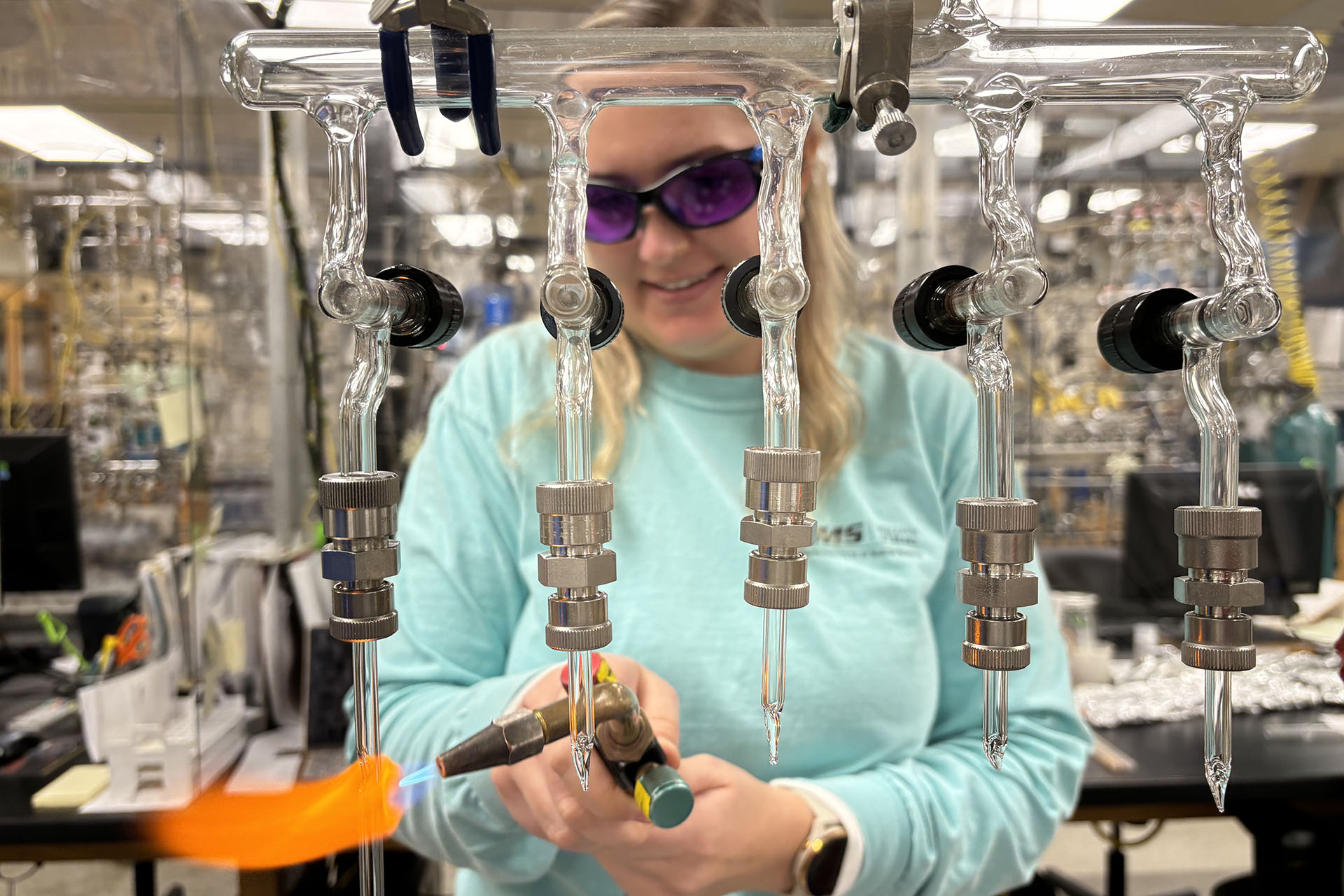Evan Flynn: Navigating muddy waters and global carbon cycles
 Originally from Colorado, Evan Flynn credits childhood beach vacations and a middle school sea camp in San Diego for sparking her early fascination with the ocean. That interest eventually led her to Eckerd College in Florida, where she majored in marine science concentrating in marine geology and minored in chemistry and coastal management.
Originally from Colorado, Evan Flynn credits childhood beach vacations and a middle school sea camp in San Diego for sparking her early fascination with the ocean. That interest eventually led her to Eckerd College in Florida, where she majored in marine science concentrating in marine geology and minored in chemistry and coastal management.
After graduating, Flynn’s interest in furthering her education was piqued by an internship with the National Audubon Society focusing on wetland conservation and land resource management in the Florida Everglades.
“I met several (William & Mary Batten School & VIMS) alumni as an undergraduate, so I arranged a detour on my way back from Florida,” said Flynn, who was able to arrange a meeting with future academic advisors and renowned geologists Professors Chris Hein and Steve Kuehl. “That stop really sold me, so I moved to Virginia and started as a master’s student in 2019.”
Flynn’s master's thesis established a sediment and terrestrial organic carbon budget for the Ayeyarwady Delta in Myanmar, one of the last remaining major river systems in Asia largely free from dams. She completed her M.S. at the Batten School of Coastal & Marine Sciences & VIMS before continuing to the Ph.D. program, a path that she says bolstered her confidence and research skills.
“My doctoral work expanded on my master’s thesis and examined natural and human influences on sediment and organic carbon accumulation on the continental shelf,” said Flynn. “It provided an interesting opportunity to establish a lot of baseline values for the system, since there are plans to install large dams on the rivers.”
One of Flynn’s main findings challenged long-standing assumptions about the fate of terrestrial organic carbon in high-energy deltaic environments. Contrary to prevailing thought that turbulent coastal zones oxidize and release much of the sedimentary carbon as CO₂, her data suggest that significant quantities of organic carbon are in fact being buried offshore. Her use of ramped pyrolysis oxidation—a cutting-edge technique she was able to utilize thanks to a collaboration with Woods Hole Oceanographic Institution—revealed that previous methods may have underestimated how much terrestrial material these types of systems can sequester.
 Despite not being able to conduct fieldwork in Myanmar due to political instability and the COVID-19 pandemic, Flynn was able to join a month-long research cruise to the Amazon Delta in June 2023, investigating similar sediment and carbon processes. She also presented her findings at the European Geosciences Union Conference in Vienna, where she was able to connect with her Burmese collaborators in person.
Despite not being able to conduct fieldwork in Myanmar due to political instability and the COVID-19 pandemic, Flynn was able to join a month-long research cruise to the Amazon Delta in June 2023, investigating similar sediment and carbon processes. She also presented her findings at the European Geosciences Union Conference in Vienna, where she was able to connect with her Burmese collaborators in person.
Beyond her research, Flynn was highly engaged in the academic community at W&M. She served in leadership roles in both the Graduate Student Association and Society of Women in Marine Science at the Batten School & VIMS as well as William & Mary’s Graduate Council, the representative body for more than 2,000 graduate students at the university.
“During my master’s I also became a certified yoga instructor—uniquely, William & Mary has a yoga school,” said Flynn, who taught yoga and Pilates for more than four years at W&M’s Bee McLeod Recreation Center.
Flynn now hopes to apply her knowledge to challenges facing coastal communities.
“I’m hoping to switch to more of an application-based approach and use my research skills to contribute to positive outcomes for coastal areas in terms of things like sediment management and habitat restoration to combat coastal flooding from sea level rise,” said Flynn, who has been in discussions with numerous consulting firms as well as the Army Corps of Engineers.
Flynn’s research has already had an impact on the field. Her master’s thesis was published in Marine Geology, and additional chapters of her dissertation have appeared or are in review in journals like Journal of Marine Science and Engineering and Estuarine, Coastal and Shelf Science. Her findings not only refine global carbon budget estimates but also stress the importance of minimizing the impacts of humans on sediment dynamics in large river systems, particularly as dam construction and land-use changes threaten these environments worldwide.

